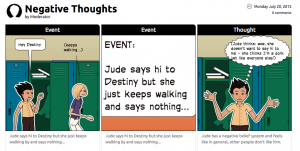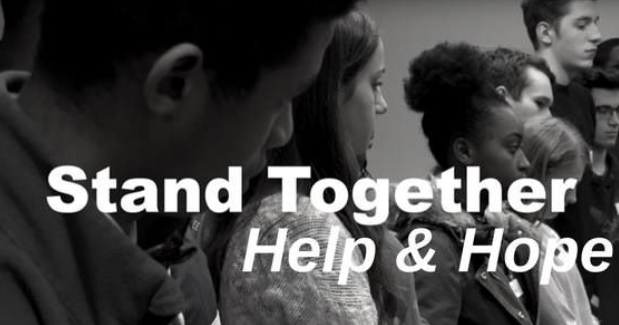What does it mean when someone talks about environmental influences on the development of depression?

It means that factors in the environment – the world around us and our life experiences – can affect depression. This can include many factors such as: where we live, our income, our friends and families, who supports us, and even the media.
Studies show that certain factors can increase the risk of developing depression. These factors include:
- being female
- traumatic life experiences
- certain medical illness
- major life changes
- not having social support and,
- sexual or physical violence can increase the risk of developing depression.
Does this mean we are dealt a hand in life and we just have to deal with it? Not necessarily. It is helpful to know that just like there are environment factors that can put someone at risk, there are environment factors that can also protect!
The world health organization has a neat report looking at these influences which have been studied in depression.
Sometimes thinking about the environment and how it affects mental illness makes us feel like we are stuck. Sometimes we feel like our environment can’t be changed, but with the right support, we find it can be.
There is another way to look at it – what parts of our environment can help depression get better?
Click on the link to take a look at this chart from the world health organization: WHO
For example, the list points out that things like good communication skills can protect, while poor communication skills can be harmful.
What parts of your child’s environment do you feel could be changed with better outcomes to their physical and mental health?
An example might be that they did not have a good group of supportive friends, but then they got involved in a new after-school activity. Through this activity, they are now able to meet people who they can count on.
Another example is, maybe you and your child didn’t spend much time together and you wanted to change that, so now you both commit to spending time together during the week to do something fun. And now, because of this time together, you can communicate better with each other.
Sometimes when we feel down, our dark-colored glasses can make us think nothing can change. But when we get help with treatment to feel better, we see that sometimes the environment can change – and our world can get better. Have you tried to change your environment to make your children feel better? If you feel comfortable, please share your examples below!










![IMG_6922[1]](https://sova.pitt.edu/wp-content/uploads/2017/11/IMG_69221.png)

![IMG_6908[1]](https://sova.pitt.edu/wp-content/uploads/2017/11/IMG_69081.png)




